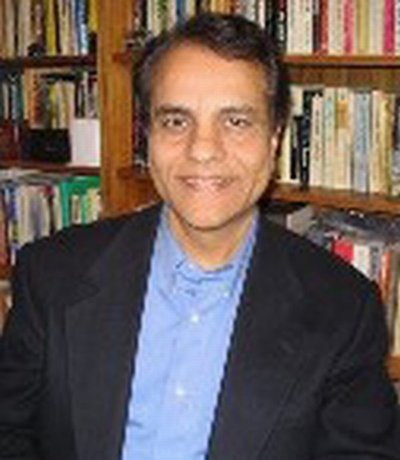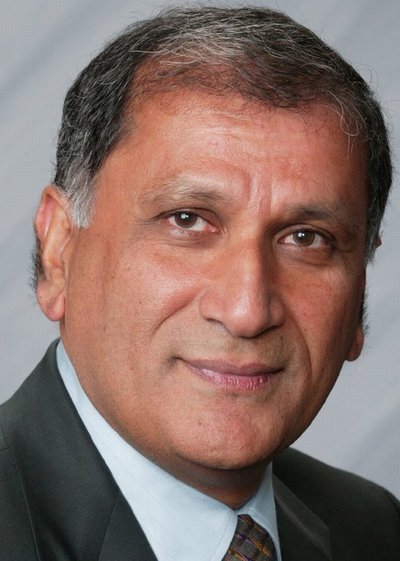November 29, 2007
A librarian’s gift: Oral history project preserves memories of South Asian immigrants
A gift from a UW librarian has spawned a three-phase oral history project, chronicling the influx of South Asians to the Seattle area from post-World War II to the 1990s.
Irene Joshi, who served at the UW’s first South Asia librarian from 1970 to 2000, gave UW Libraries a $7,000 gift in 2003, which financed the gathering of seven interviews of people who had migrated to Washington from India, Pakistan or Bangladesh from the 1950s through 1960.
“Irene’s interest in the oral history project was triggered by the death, around 2000, of one of the first people in the postwar cohort,” says Linda DiBiase, collection development librarian who served as interim South Asia librarian after Joshi’s retirement. “She realized that this history would be lost if steps were not taken to preserve it.” Her gift allowed the UW to contract with the Museum of History and Industry to manage the initial phase of the project. The museum was chosen because of the experience its staff had with oral history projects.
Deepa Banerjee, who joined UW Libraries as one of Joshi’s successors in 2006, was interested in the project and thought it deserved to be continued. Under her direction, the second phase, with 10 interviews, is nearly finished and covers the 1960s and 1970s. It was made possible by support from local South Asian organizations such as the Indian Association of Western Washington and the Indian American Education Foundation, a 21st Century Grant from the Libraries itself, individual donations and a 4Culture grant (formerly the King County Arts Commission). And a third phase, already planned, will cover the 1980s and 1990s. The project has received essential UW support from Special Collections, which has agreed to house the interviews. Both the second and third phases have been guided by an advisory committee composed of UW faculty, members of the local South Asian community, community organizations, librarians and others.
The period after the war covers the earliest immigration from South Asia to the region, except for a group of primarily Sikh men who came to Seattle around the turn of the century. Immigration from Asia was practically barred by federal legislation from 1917 until the 1950s. The partition of India and Pakistan in 1947, growing immigration restrictions in Great Britain, and opportunities for education in the U.S. drew the next wave of immigrants of the modern era.
This group of immigrants was highly educated. Balraj Sokappa, who came to Seattle in 1954 to work on his doctorate at the UW, ended up working for NASA on the guidance systems used in the Apollo program. Many others in this first cohort became professionals in engineering and medicine.
“There has been an intense level of civic engagement for a group that had so recently immigrated to the United States,” says Amy Bhatt, a doctoral student in women studies and the current project oral historian and coordinator. Bhatt has been involved with the project at all phases, beginning as the interview transcriber. She says that the individuals who came in the first wave began quickly to work on establishing local fraternal and cultural institutions. These included schools that taught Indian languages, a Hindu Temple in Bothell, civic groups such as the Indian American Political Advocacy Council, and Ragamala, which provided traditional South Asian performing arts to the Seattle community. While some of these organizations took decades to bring to fruition, many of the seeds were planted by those early immigrants. In those years, many South Asian immigrants struggled to retain pieces of their cultural identity, even if it was informal. For example, a group of UW Indian students had Bollywood films flown to Seattle from New York. They would drive to SeaTac to pick up the reels and have monthly screenings on campus, complete with tea and samosas.
“They saw a need to develop a community,” Bhatt says. “They were so few that when one South Asian would encounter another in downtown Seattle, they’d stop and talk to one another. There was no local supply of South Asian food or spices, so they’d organize special trips to Vancouver.”
They saw their children becoming very much assimilated. Shanta Gangolli said, “My children grew up pretty much Americans because the neighborhood they lived in, you know, were mostly American children. They think of themselves more as Americans than Indians. Whereas now, I see that the young children that are growing up, there is the Indian Association of Western Washington and all those children are taught dancing, Indian music, they participate in Indian cultural events. It wasn’t there when my children were young.”
Prem Kumar, who came to the University of Idaho in 1970 to get a master’s degree and later joined Boeing as a technical editor, described the tension between the old and the new: “You cannot become a citizen of this country and never go out and vote…. Or, come here and within five years, feel that you have nothing to do with your roots. Because our identities are shaped by our past, our heritage. And we, Asian Indian-Americans, particularly have an added responsibility because our identity is deeply rooted to our heritage…. This is your country because you have chosen to become a citizen of this country and establish roots. But at the same time, you spent a considerable part of your life in the country that you were born in and you have a sense of responsibility and obligation to keep a balance between the two.” Kumar was one of the founders of the Indian American Political Advocacy Council in 1994 and is executive director of the Indian American Education Foundation.
Jafar (Jeff) Siddiqui immigrated from Pakistan to go to graduate school in the 1970s, settled in Seattle and was one of the founders of the Islamic School of Seattle. Regarding his identity, he said, “I’m an American and I’m very proud of the fact that I’m an American…. And I’m very proud of the fact that I was a Pakistani. In the eyes of Pakistan, I’m still a Pakistani. And sometimes I still feel like I’m a Pakistani. But it’s not mutually exclusive. To me, I can be a very proud American, a very proud Pakistani, and a very proud Muslim.”
Throughout the phases of the project, care has been taken to interview a diverse group that includes individuals from India, Pakistan and Bangladesh, men and women, and people who married those of other nationalities. While there was a standard series of questions that everyone was asked, the “narrators,” as they are called in oral history projects, were able to take the interview in ways that interested them but were still on topic. The UW has obtained copyright releases from all participants, which will enable the University to digitize interviews and make them available on the Web. The first phase interviews were audio only, but subsequent phases include video.
“These documents will be useful for people studying elements of Pacific Northwest history, or those studying issues of the diaspora in ethnic studies,” says Banerjee.
Perhaps not coincidentally, the Wing Luke Asian Museum is adding a “portrait gallery” focusing on four national groups, one of which is South Asians. “It’s quite exciting,” says Bhatt. “The museum is expanding its idea of what it means to be Asian in America.”
If the first wave was tied to the UW and the second to Boeing, the third is most strongly identified with Microsoft — although, as time passes, the South Asian community is becoming dramatically more diverse.
As word of the project has spread in the South Asian community, it has created a buzz, Bhatt says. “At first, people are a little surprised that the UW would be interested in their history. It has provided them with an opportunity to reflect on their lives and what they have accomplished.”


